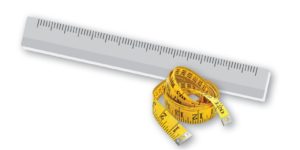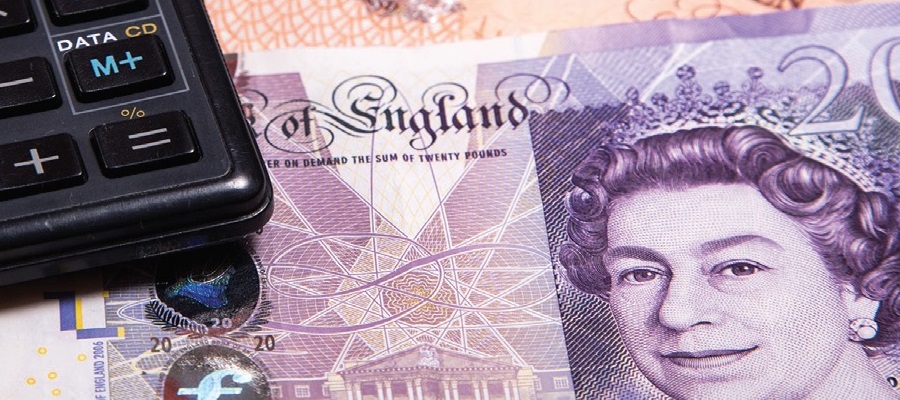Britain has always had a strange relationship with Europe, part of it but  not fully part of it, clinging1 passionately to its own traditions, and with many British people deeply suspicious of ‘foreign’ things. The example I want to use here is a very everyday one: MEASUREMENTS.
not fully part of it, clinging1 passionately to its own traditions, and with many British people deeply suspicious of ‘foreign’ things. The example I want to use here is a very everyday one: MEASUREMENTS.
Until February 15, 1971, when the UK ‘went decimal’, the smallest unit of currency was a penny. Twelve pence made a shilling and 20 shillings a pound (£), so a pound was 240 pence. After 1971, a pound was 100 pence. (Until 1984, there was also a ‘new halfpenny’.) There is still nostalgia for the old system, with recent newspaper headlines like ‘The day Britain lost its soul’ (The Daily Mail). We were supposed to abandon2 a lot of other traditional measurements too, but in fact a lot of them seem to survive, sometimes officially, sometimes unofficially. Most of us are happy with metric measurements these days, though. They’re easier! Let’s look at a few examples.
Until about 35 years ago, the standard measures for liquids were two pints in a quart3, four quarts in a gallon (and British gallons are different from American ones). Now, though, petrol and liquids in bottles are sold in litres. But drinks like beer in pubs are still sold by the pint (.576 of a litre).
Let’s consider weights. Instead of grams, kilograms, and so on, we used to have 16 ounces in a pound4, 14 pounds in a stone, 8 stones in a hundredweight, and 20 hundredweights in a ton! Many Brits still use at least some of these; for example, I still catch myself thinking that 100 grams is roughly four ounces when I am shopping, and packages of food sold in supermarkets often weigh 454 grams, which, coincidentally, is exactly one pound.
A third example is measurements of distance. In the ‘good old days’, there were 12 inches5 (an inch being 2.54 cm) in a foot, 3 feet in a yard, and 1760 yards in a mile. All distances and speed limits on British roads still use miles, and many of us still use the old system for other reasons.
In football we often refer to the penalty area as the 18-yard area, and a quick search took me to a website where I learned that Vladimir Putin is 5 feet 7 inches tall (or 1 metre 70, the same as me). Copper pipes and road bicycle frames are measured in inches, as are all clothes, but steel pipes and off-road bicycle frames are in centimetres. Television screens are measured in inches all over the world. And so on.
Other eccentricities exist. In horse racing, distances are still measured in furlongs (8 furlongs = 1 mile); the height of horses themselves is measured in hands; land is still generally bought and sold by the acre (1 chain by 1 furlong, or 66 by 660 feet!) rather than the hectare; and precious metals are measured in something called troy ounces.
Looking back at these examples, I think the changes have clearly made life easier, and however much conservative newspapers may weep for the past, I do not think it is very likely that Brexit will mean a return to the systems we used to have; the British may be crazy but they’re not completely crazy!
ACTIVITIES, ANSWER:
– What are the things about your country that are unique and make you proud of it?
– What do you see as the positive and negative aspects of your country’s membership of the European Union?
– If there was a vote in your country on staying in the European Union or leaving it, how would you vote? Why?
– Let’s have fun with maths for a moment. Complete the following sentences. All the clues can be found in the article.
a) A 32 inch TV is ………………. cm from bottom left to top right.
b) If you had 2 pints last night, you drank ……………… l of beer.
c) If you buy 6 pounds of meat, you actually get ………………. kilos.
d) If your brother is 6 feet 2 inches tall, he is ………………. cm tall.
e) If your Granny lives 15 miles away, you need to drive ……………….. km to visit her.
Simon Gill
Vocabulary: 1 lipnúť – lpět; 2 opustiť, vzdať sa – opustit, vzdát se; 3 dve pinty v kvarte – dvě pinty v kvartě;4 16uncí v 1 libre – 16 uncí v 1 libře; 5 palec
Key- a) 81.28, b) 1.15, c) 2.72, d) 187.96, e) 24.14

